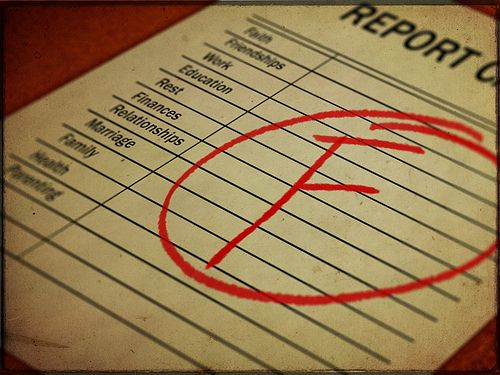US Earns D+ On Emergency Care Report Card, Falls From C- In 2009

Soon after the news that the U.S. isn’t even close to number one among countries with the healthiest food, the American College of Emergency Physicians (ACEP) has released their latest “report card,” which grades the nation’s emergency medical services. Our performance? An abysmal, yet just passing, D+.
The analysis began with an assessment in 2009, which measured — like it does today — each state for five qualities of emergency care. These included: access to emergency care, quality/patient safety, medical liability, public health/ injury intervention, and disaster preparedness. At least one state aced each of the five categories; however, many states fell overall between 2009 and 2014. Wyoming, in fact, received a flat-out F. The only category it did not fail was medical liability, for which it received a D-.
"This report card is saying: The nation's policies are failing to support emergency patients," Alexander Rosenau, president of ACEP, told CNN. And they’re failing fast. Only five years ago, the nation received a C-. While some categories kept their heads just above water — patient safety and injury prevention each earned a C — the D- earned by access to emergency care pulled the group down with it.
"If I'm in a car crash and they bring me to hospital that's not ready for me, my chances of survival are less," Dr. Jon Mark Hirshon, an emergency physician at the University of Maryland and board member of ACEP, told CNN. "So you want a state that has that type of trauma system. And when you look at patient safety, that's one of the components of patient safety."
To collect its data, the College used 136 different indicators based on the five metrics comprising the study. These fluctuated from the 2009 report card according to the availability of certain data and newfound relevance appropriated for certain metrics. ACEP issued surveys to EMS personnel and Disaster Preparedness state officials, along with the ACEP Survey of EMS Practices and Policie, which contained 11 questions and was sent to EMS directors in all 50 states, Washington, D.C., and Puerto Rico. The overall response rate was 100 percent.
The entire country doesn’t earn a D+ by having shining individual states. Across all categories, near failing or outright failing grades popped up with shocking frequency. Twenty-one states received an F for their access to emergency care; 10 states failed when it came to both medical liability and patient safety; 28 failed or received a D for public health and injury prevention; and perhaps most harrowing, nearly half received a D or F in measure of disaster preparedness.
The report wasn’t all bad news, however. Washington, D.C., aced both disaster preparedness and access to emergency care, and several other states followed suit within certain categories. Maryland, Utah, Pennsylvania, and North Carolina each earned an A for patient safety; meanwhile, Hawaii, Massachusetts, Maine, Minnesota, Oregon, Utah, and Washington got As in public health/injury prevention.
Still, these are outliers. A lack of emergency care indicates a critically flawed system of treatment, Hirshon remarked. "You can have the best medicine in the world, but it won't matter if people can't get to it.” According to the Centers for Disease Control and Prevention, emergency department visits increased by 34 percent between 1995 and 2010. Meanwhile, the supply of emergency departments fell by 11 percent. This concerns people in Hirshon’s position, who must reconcile increasing demand for efficient emergency care with physicians fleeing states with high-liability insurance premiums.
"We'll be asked to do more with less resources,” Rosenau told CNN, “which has the potential to impact emergency patients.”
Published by Medicaldaily.com



























